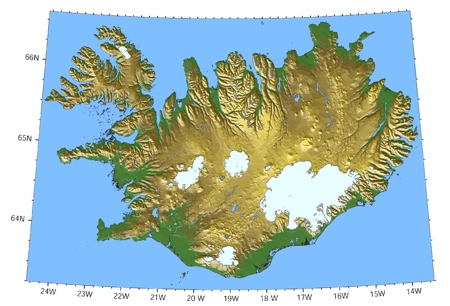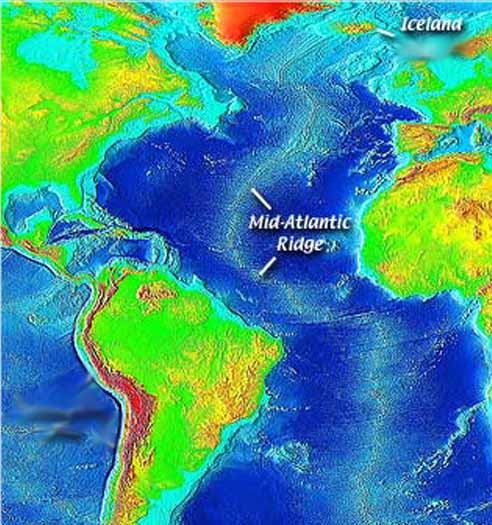The Accretionary Wedge is back for its 45th edition this month and it is a great topic:
Geological Pilgrimage – the sacred geological place that you must visit at least
once in your lifetime.
This topic is further defined as a single place, which is “geologically” unique, relatively remote, and requires some difficulty to get to.
I have thought quite a bit about where I would like to make my pilgrimage too...at first it was tough to narrow it down as great places that I have never been kept jumping into my head: the Grand Canyon, the barren tundra of Antarctica and/or Ellesmere Island,
Long ago a pilgrimage was usually a journey that someone undertook to visit a place at the heart of their religious faith. e.g. Rome or Mecca. The pilgrimages of yore however, were often epic journeys that took months or years and involved great personal risk to the traveler as they ventured through wild and untamed country. Happily in today's world even the most remote places on the globe are accessible by air so in terms of remoteness Iceland is 3,833 km away, so um, I guess that is pretty remote....and in terms of its difficulty to get too...well I have to go all the way to Toronto from Ottawa to fly there and that is a big pain.
The whole point of the pilgrimage though is not necessarily how far you have to go, but the experience of the journey and the place you are venturing to. For my geological pilgrimage I wanted a place that would leave me in awe at the inner workings of the Earth, and that while not only being a spectacular place to visit, would also give me a sense of being somewhere that has a geologic story to tell that integrates many periods of Earth history. The most incredible geologic places that I have stood have all given me the same feeling. It is a sort of heightened awareness of the interconnectedness of the Earth processes that wrought such fantastic things, the time that it took to create them, whether it be millions of years or mere minutes, and finally the Earth is something so much more complex and wonderful than I could ever fully comprehend. A good place for a geologic pilgrimage has to deliver that sort of mind-blowing feeling.
I think that Iceland is just such a place, and here is why:
 |
| Relief map of Iceland |
Iceland is located in the North Atlantic and, despite its chilly sounding name, is not covered in ice, although it does have glaciers. Indeed, the origins of Iceland are anything but cool (haha) as it was born out of rifting and volcanism. Approximately 130 million years ago a large magma plume welled up from the mantle under the supercontinent Pangaea. The plume, which had a diameter of 2000 km eventually led to rifting between the North American and Eurasian plate and large scale volcanism about 60-55 million years ago. As the rifting continued the two plates began to separate further and form what is now the North Atlantic ocean. As the plates continued to separate the plume remained fixed as the plates passed over it. This led to a trail of plume material that can be seen in Greenland. To get a better idea of what I am describing imagine you are holding a sheet of paper and pulling it down over a ball. At the beginning the paper simply bulges upward, however if you pull longer and harder eventually it tears. This is analogous to how the crust behaves when a mantle plume is rising under it and how the plume leads to rifting and eventually the breakup of a supercontinent. The mantle plume still exists under Iceland and is the reason for the many earthquakes, volcanic eruptions and continuing geothermal activity that occurs there today.
 |
| 3D image of the mantle plume under Iceland |
 |
| The Mid Atlantic Ridge |
 |
 |
| The outcrop of the Mid Atlantic Ridge (note: this photo came from the Smithsonian's list of 43 places to see before you die, so I guess I'm in good company) |
The other major reason that I would like to go
to Iceland is to watch a geyser erupt. Iceland is the original home of
the geyser. Indeed, the word geyser is Icelandic for the verb to gush, and that
is exactly what geysers do. Geysers spew jets of superheated water high into
the air on an intermittent basis. They are the perfect combination of
structural geology, geothermal heating and groundwater and I am dying to see
one in action!
 |
| Strokkur Geyser, Iceland |
Geysers exist only under perfect circumstances
when there is ample heat, a ready supply of groundwater and a plumbing system
of interconnected fractures and cavities. The mechanism that leads to a geyser
erupting is complex. It begins with groundwater infiltrating the “plumbing
system” of the geyser and beginning to fill it. The geothermally heated rocks heat
the water to its boiling point. Meanwhile the reservoir is continually filling
with cooler groundwater. The hot water at the bottom of the reservoir forms
bubbles which rise heating the rest of the water to boiling temperatures.
However, the very hot water at the bottom does not actually boil because of the
pressure exerted upon it by the overlying cooler water until all of the water
in the plumbing system has reached its boiling point. Once all of the water
starts to boil the bubbles of steam begin to multiply rapidly until there are
too many to escape causing a drop in pressure within the plumbing system. This sudden
drop in pressure causes all of the water to boil and explode out of the reservoir
causing the huge fountain of boiling water that constitutes the eruption of a
geyser. This process then repeats itself as long as there is an ample supply of
heat, and the groundwater recharges the reservoir.
I have other reasons for going to Iceland as well. Some of these include seeing glaciers, seeing an active volcano, going in a volcano (I only learned that this was possible today), and seeing some of the incredible cultural history the island has to offer. Hopefully I can check Iceland off my list of places to see soon!!
Matt
References:
Allen, R. M., Nolet, G., Morgan, W. J., Julian, B. R., Pritchard, M., Ragnarsson, S., & Stefa, R. (2002).
Plume driven plumbing and crustal formation in Iceland, 107.
http://eps.berkeley.edu/~rallen/pub/2001icecrust/Allen2002IcelandCrustJGR.pdfhttp://academic.emporia.edu/aberjame/student/brown3/iceland.htm
No comments:
Post a Comment